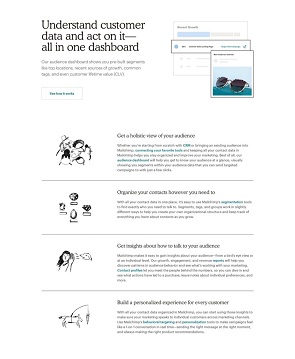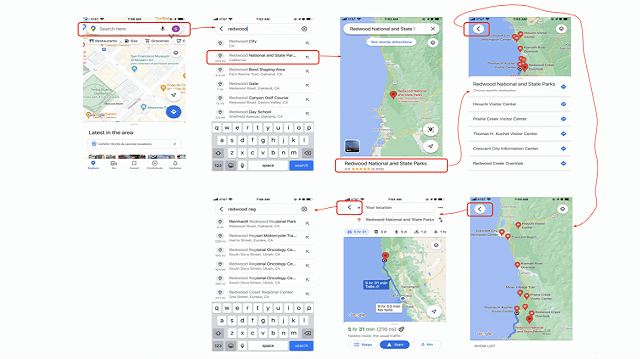Writing is writing, right? Well, sure. In the broader sense of the word, the action of writing is the same. However, there’s a lot more to this – especially in marketing. And one form of writing that is often misunderstood or grouped under a completely different, often incorrect umbrella term is UX writing.
Today we’re going to showcase the misunderstood beauty that is UX writing and even go as far as to share a UX writing style guide to help you utilize this marketing tool to its full potential.
What is UX writing?
Naturally, if we’re going to tell you how to do something, you probably need to know what that something is. So, let’s talk about UX writing.
UX writing is all about creating the ultimate user experience. Anywhere a device and user come together will be a space where UX writing thrives to create a seamless user experience. This had previously been limited to the computer space, but with the rise of smart, internet-enabled devices, this concept has grown.
The purpose of UX writing is to help guide the customer on their journey with your brand or product. If you are selling soap, for example, then your UX writing should be crafted in such a way that it encourages and facilitates the process.
UX writing vs copywriting
We know what you’re thinking, “but that’s just copywriting?”, and this is where the problem exists. To better understand this, it will depend on the question you’re asking.
If you were asking “Is UX writing the same as copywriting?”, the answer would be np. It’s more than just text, it’s an interactive design experience that seeks to encourage certain behaviours. To some extent copywriting does have the same basis, but it’s not quite the same as UX writing.
If you were to ask “What is UX copywriting?”, you would open yourself up to a more comprehensive answer – and a lot less sass from your UX team. UX writing is crafted in a way that encourages and facilitates certain online behaviours. The copy is designed for purpose, and when done correctly, gives businesses a competitive advantage.
The similarities between UX writing and copywriting extend to the point that copy needs to be crafted. However, the copy created is vastly different. UX writers need to understand every part of the customer journey and develop prompts and responses to address any and every potential outcome. This can be as simple as creating buttons or more tailored to include pop up messages and responses.
UX writing is more than just writing text, they are experts when it comes to customer service and interaction. They see the process from the customer’s perspective and guide the business in addressing this in the most effective way possible.

The Importance and benefits of UX writing
In case it wasn’t already obvious, the importance of UX writing cannot be stressed enough. It’s the difference between a customer investing in your brand or heading to a competitor site that’s easier to use.
The aim is to make the online customer journey as problem-free as possible. Bonus points if it’s enjoyable and interactive. This will ensure that they return time and time again, as well as share their feedback with family and friends, increasing your following.
Having said that, here are the 4 main benefits of using UX writing in your business:
- It puts your team into the mind of the user to develop the best possible customer experience.
- Increasing sales and revenue as customers make it through the customer journey quickly and effectively.
- Improve product sales and usability by giving customers a better idea of how things work.
- It can change the market perception of the product by providing useful information upfront and cutting all the unnecessary fluff.
Examples of good UX writing.
When it comes to any form of marketing, certain brands fare better than others, and in the world of UX writing, there are a few stand out brands. We’ll mention a few and why we think they’re doing a great job.
Slack:
Their approach is to be straightforward in telling users what is going on – and they even add personality to their messaging for a more customized experience.

Tinder:
Setting up a dating profile is tricky unless you use Tinder. The app makes the process quick and easy without leaving users overwhelmed. It also seeks to increase engagement by giving users suggestions on what to do next, for example, sending a message to someone you’ve connected with.

Mailchimp:
Creating your own marketing emails has never been easier. The app tells you exactly what needs to be done and what to expect.

Google Maps:
Sharing directions and traffic information effectively is key here and reducing the risk of confusion is critical. Google Maps has nailed it.

15 UX writing best practices
When it comes to customer experience, your interface needs to be easy to use and understand. This will encourage them to follow the process as expected and boost sales and revenue for your business.
To help you launch a successful website, we’ve got a few guidelines to shape your approach to UX writing.
1. Cut the fluff:
Get rid of any unnecessary text that serves no purpose, keep it simple and to the point.
2. Focus on the positive:
Tell the user why they should team up with you and the difference that can be made. Even if something goes wrong, try to focus on the lighter side of things.
3. Avoid creative words and mashups:
Don’t reinvent the wheel, use standard, easy to understand words.
4. Numbers are easy to understand:
Once again, keep things simple and easy to understand by using numerical values instead of writing everything out.
5. Be concise:
Don’t try to emphasize your point by repeating the same word or different variations thereof, it doesn’t work.
6. Keep your approach consistent:
From the language you use to how things work, keep it all uniform.
7. Personalize your approach:
Don’t refer to someone as “the user”, address them and call them “you”. And when you ask them to do something or refer to yourself, say “I”.
8. Focus on the user:
The whole point of the exercise is to make the user journey seamless, which means that you need to understand what the user needs.
9. Don’t shout:
All caps are not ideal, rather keep things mellow and use sentence case if possible.
10. Keep it short and simple:
From your choice of words to the length of the content, keep it short and sweet, don’t overcomplicate things.
11. Keep responses polite:
Even if things aren’t going according to plan, be polite and guide the user on an alternative way forward. The last thing you want to do is cause them any distress.
12. Stay away from jargon and technical terms:
Keep your approach user friendly, don’t try and seem smarter than your customer, it can be off-putting.
13. Dummy text is not your friend:
Avoid leaving any text like lorem ipsum, rather put a message in place to indicate that something will be loaded soon.
14. Research your customer:
See what they like and what they don’t like and use this to build a foolproof UX strategy.
15. Test your system:
Whenever it comes to customer experience, the best way to determine the success thereof is to test it out yourself to see how everything comes together. This way you won’t have an angry customer bringing it to your attention later.
Bringing it all together
As a business, a customer-centric approach is important, and this is where UX writing comes into play. Every component needs to be carefully selected and tested to ensure that you attract the user initially, and keep them coming back long thereafter.
If you need help developing a solid UX strategy, get in touch with us and our team will guide you on the right path.




